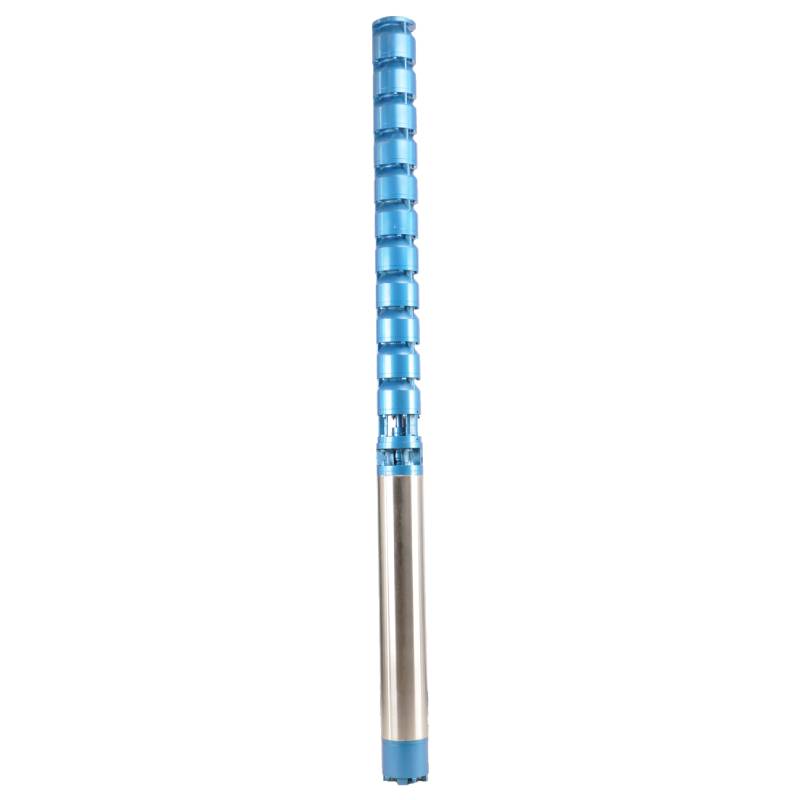Dec . 04, 2024 10:32 Back to list
submersible tank pump
Submersible Tank Pumps A Comprehensive Overview
Submersible tank pumps are crucial components in various industries, particularly in water management, agriculture, and construction. They are specifically designed to operate underwater, making them highly effective for pumping liquids from below the surface. This article explores the workings, applications, advantages, and considerations associated with submersible tank pumps.
What is a Submersible Tank Pump?
A submersible tank pump is an electric pump that operates while submerged in the fluid it is intended to pump. Unlike traditional pumps that need to draw liquid up to the surface, submersible pumps push the fluid to the surface, which makes them more efficient for deep well applications and other situations where the liquid source is located below ground level.
How Does it Work?
The operation of a submersible pump involves a motor that is hermetically sealed to avoid any water intrusion. The motor drives a series of impellers which increase the pressure of the liquid and push it towards the discharge pipe. The design of submersible tanks allows them to effectively handle various fluids, including water, sewage, and even certain chemicals, depending on their construction.
One significant advantage of submersible pumps is that they are designed to minimize cavitation, which is a phenomenon that can cause damage to the pump by creating vapor cavities. Because submersible pumps are placed below the liquid level, there is a constant supply of fluid to maintain pressure. This operational mechanism enhances their longevity and efficiency.
Applications of Submersible Tank Pumps
The versatility of submersible tank pumps allows them to be utilized in several fields
. Common applications include1. Agricultural Drainage and Irrigation Farmers often utilize submersible pumps to drain excess water from fields or to irrigate crops. Their ability to operate effectively in wells and other deep sources of water makes them invaluable in managing water resources.
submersible tank pump

2. Sewage and Wastewater Management Municipalities commonly use submersible pumps for transporting sewage and wastewater, providing a vital service in sanitation. They can handle large volumes of waste while minimizing the risk of clogging.
3. Construction Sites In construction, submersible pumps are used to dewater sites that have become inundated. This allows for consistent progress in construction activities, even in rainy weather conditions.
4. Fire Protection Systems Many fire protection systems rely on submersible pumps to draw water from underground sources, ensuring that there is a reliable supply in case of emergencies.
5. Industrial Uses Industries utilize submersible pumps in processes that require the transfer of liquids, such as chemical mixing or oil extraction.
Advantages of Submersible Tank Pumps
Submersible tank pumps have several advantages that make them a preferred choice for many applications
- Efficiency They require less energy to operate, as the motors are submerged in the fluid. - Less Noise Because they are underwater, submersible pumps operate more quietly compared to surface pumps, making them suitable for urban areas and residential settings. - Reduced Risk of Contamination Sealed units reduce the chances of contamination from external sources, providing cleaner and safer pumping of fluids. - Durability Most submersible pumps are built to withstand harsh environments, including corrosive fluids or varying temperatures, ensuring long-term operation.
Key Considerations
While submersible tank pumps have numerous benefits, there are several factors to consider when selecting and using them. Proper sizing is essential; a pump that is too small will fail to meet the required flow rate, while an oversized pump can lead to unnecessary energy consumption. Maintenance is also critical; although these pumps are built for durability, regular checks can help identify any issues early on and prolong their lifespan.
In conclusion, submersible tank pumps provide a reliable and efficient solution for various pumping needs across multiple industries. Their capability to operate underwater, combined with their efficiency and versatility, makes them an indispensable tool in modern water management and industrial applications. As technology evolves, we can expect to see advances in submersible pump design and functionality, further enhancing their effectiveness in our daily lives.
-
Submersible Water Pump: The Efficient 'Power Pioneer' of the Underwater World
NewsJul.01,2025
-
Submersible Pond Pump: The Hidden Guardian of Water Landscape Ecology
NewsJul.01,2025
-
Stainless Well Pump: A Reliable and Durable Pumping Main Force
NewsJul.01,2025
-
Stainless Steel Submersible Pump: An Efficient and Versatile Tool for Underwater Operations
NewsJul.01,2025
-
Deep Well Submersible Pump: An Efficient 'Sucker' of Groundwater Sources
NewsJul.01,2025
-
Deep Water Well Pump: An Efficient 'Sucker' of Groundwater Sources
NewsJul.01,2025
-
 Submersible Water Pump: The Efficient 'Power Pioneer' of the Underwater WorldIn the field of hydraulic equipment, the Submersible Water Pump has become the core equipment for underwater operations and water resource transportation due to its unique design and excellent performance.Detail
Submersible Water Pump: The Efficient 'Power Pioneer' of the Underwater WorldIn the field of hydraulic equipment, the Submersible Water Pump has become the core equipment for underwater operations and water resource transportation due to its unique design and excellent performance.Detail -
 Submersible Pond Pump: The Hidden Guardian of Water Landscape EcologyIn courtyard landscapes, ecological ponds, and even small-scale water conservancy projects, there is a silent yet indispensable equipment - the Submersible Pond Pump.Detail
Submersible Pond Pump: The Hidden Guardian of Water Landscape EcologyIn courtyard landscapes, ecological ponds, and even small-scale water conservancy projects, there is a silent yet indispensable equipment - the Submersible Pond Pump.Detail -
 Stainless Well Pump: A Reliable and Durable Pumping Main ForceIn the field of water resource transportation, Stainless Well Pump has become the core equipment for various pumping scenarios with its excellent performance and reliable quality.Detail
Stainless Well Pump: A Reliable and Durable Pumping Main ForceIn the field of water resource transportation, Stainless Well Pump has become the core equipment for various pumping scenarios with its excellent performance and reliable quality.Detail
